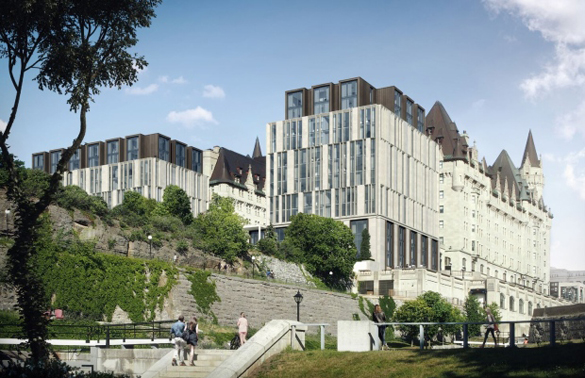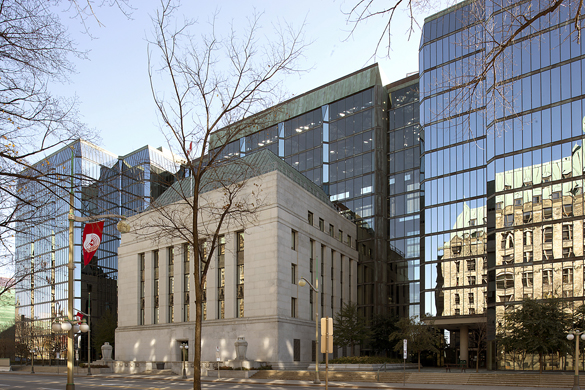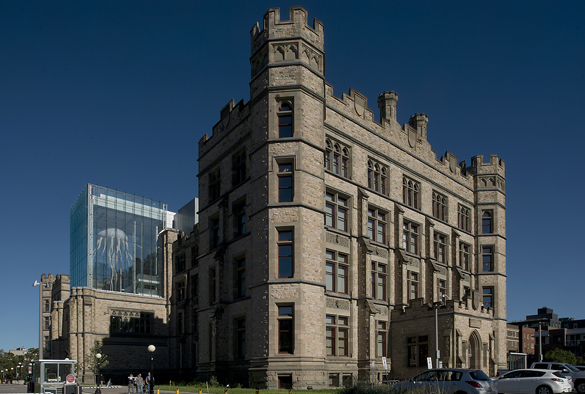The controversy over the proposed addition to the Château Laurier continues to sizzle. It’s great to have architecture at the centre of so much public discussion, but a few of the points being made really require more than the cursory exploration they’re getting in the press.
Case in point: Kelly Egan opined in the Citizen last week that Ottawans dislike the design because they are fundamentally staid by nature, and hate ‘edgy’ architecture – or anything Modern, for that matter. Really?
Okay, let’s deal with ‘edgy’ first. I’m not certain what it means, which is always a bad sign – I suspect it’s a word used by those who want to look cool to make those who disagree with them look uncool. But if it means anything at all architecturally, surely it must refer to something that’s bold, radically original, and ground-breaking.
Just to remind us, this is the design by Peter Clewes for the Château Laurier:
Now, has anyone been to Algonquin College in the last few years, and seen the Algonquin Centre for Construction Excellence, completed by Diamond Schmidt Architects in 2011?
Okay, so much for ‘edgy’.
But what about Ottawa’s alleged allergy to anything Modern? I don’t buy this either; the city has great examples not only of Modern architecture, but of Modernist additions to historic buildings that the city has embraced quite happily.
In the 1970s, Arthur Erickson added a massive glass backdrop to the original Bank of Canada building. It works beautifully, because it doesn’t disrupt the main view of the Bank from Wellington Street, and the clean lines of Erickson’s building frame the older structure rather than distracting from it.
Just a few years ago, Barry Padolsky and collaborators added a luminous glass tower to the Canadian Museum of Nature. Again, it works, because it doesn’t overwhelm the building and it follows lines suggested by the existing architecture. It grows out of its predecessor like a limb, rather than a tumour.
By contrast, the proposed addition to the Château Laurier overwhelms the view of the original building (and of the whole parliamentary precinct) from the river and from Gatineau, and its rhythm and massing are oblivious to that of the older structure. It would be a perfectly sound design on its own, but as an addition to a heritage building it falls well short of the thoughtful standard set by Erickson and Padolsky.
It is possible to make an explicitly Modern addition to a historic building, to do so respectfully and have Ottawa buy into it. But I am also interested in the assumption that any addition to the fabric of a historic building must be uncompromisingly Modernist, and cannot contain any features of historicist ‘imitation.’ I’ll dig into that issue in a future blog.
Peter Coffman
peter.coffman@carleton.ca



